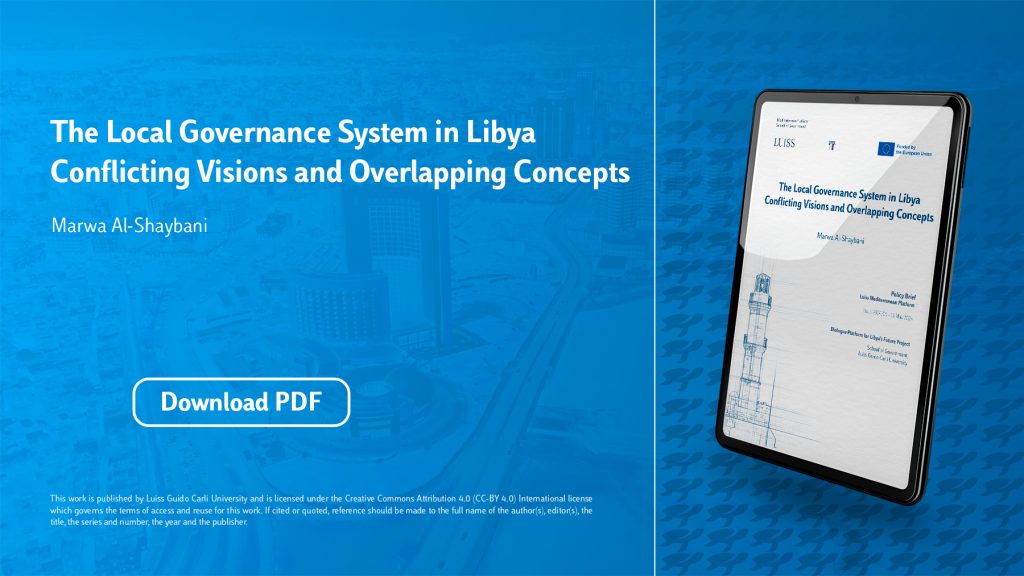Introduction
Marwa Al-Shaybani 18 April 2024
Early 2024 marked a significant shift in how local elections are conducted in Libya. The Libyan High National Election Commission—which replaced the previous Central Committee for the Election of Municipal Councils[1]—announced its plans to hold elections for 95 out of 144 municipal councils in a single day. Alongside this, it also adopted new electoral regulations.[2] This was the first instance of municipal council elections being conducted independently in Libya, without oversight from the Ministry of Local Government and the Prime Minister’s Office.
Additionally, the Presidential Council announced its strategy to reorganise the local administrative system of the country. Accordingly, it established a committee to study the feasibility of adopting a governorate system, which would decentralise power and reduce the central government’s influence over local matters.[3]
The abovementioned initiatives are part of a series of attempts to decentralise Libya’s administrative system. Throughout various political eras, from the monarchy to the Jamahiriya, policymakers have sought to establish an effective decentralised system. During the Sanusi Monarchy, the focus was on building the state through localised yet centralised institutions, with municipalities, governorates, and three provinces: Tripoli, Cyrenaica, and Fezzan.[4] Under the Jamahiriya regime, the local structure underwent significant transformations across three stages: initially maintaining the royal administrative divisions, then transitioning to municipalities, and ultimately adopting Shaabiyat as the administrative unit.
Marginalisation and poor governance were among the main reasons for the calls of regime change across Libya in the popular protests of 2011. The National Transitional Council responded to these demands by enacting Constitutional Law No. 59 of 2012, which established yet another local administrative structure.[5] The law detailed the governance responsibilities at the municipal and governorate levels, which would be overseen by the Ministry of Local Government. To elect local municipal councils, direct elections were planned, under the supervision of the Central Committee for Municipal Council Elections.[6] Accordingly, amendments were made to temporarily delegate some of the governor’s prerogatives related to taxes, local budgets, and investment projects to the local authority.[7]
Over twelve years have passed since Law 59 on Local Administration and its Executive Regulations were passed. Despite several efforts to establish an effective, decentralised local administrative system, the issues of over-centralisation and inadequate service delivery continue to dominate discussions about the future of local governance in Libya. Furthermore, there is no consensus among decision-makers on the ideal model of local governance that best suits the country’s challenges and needs. This disagreement is not only limited to visions and aspirations, but extends to the definition of local administration and concepts related to potential models.
This policy paper discusses the issue of local governance in Libya. It sheds light on the key challenges facing decision-makers in envisioning a local administrative system that meets citizens’ needs and aligns with the country’s unique context. The first section provides a historical background of past attempts to establish decentralisation and offers insights for their failure. The second section discusses the challenges of determining the optimum governance model, among which are a lack of consensus among decision-makers and a confusion over the definitions and models of local administration.

